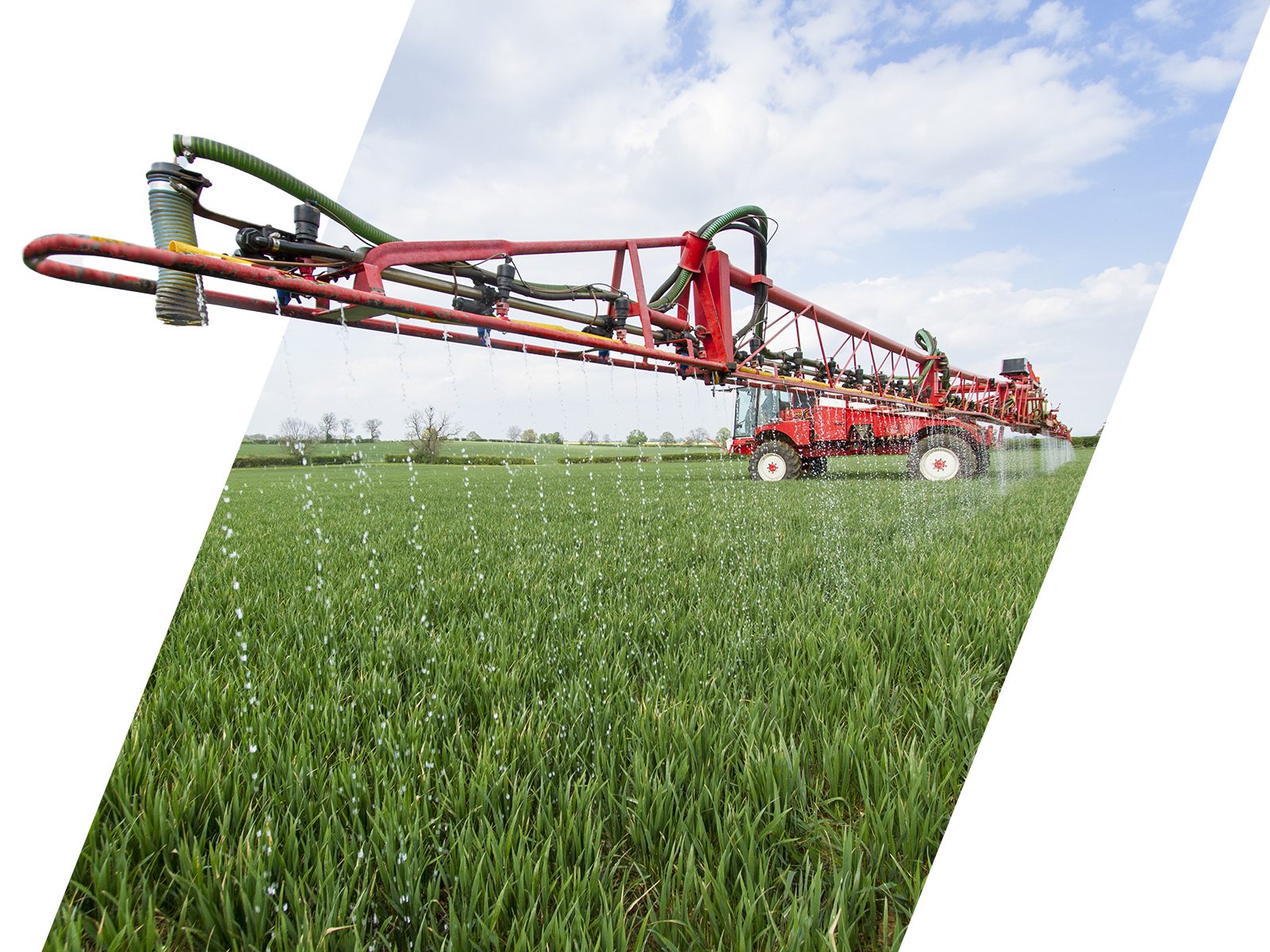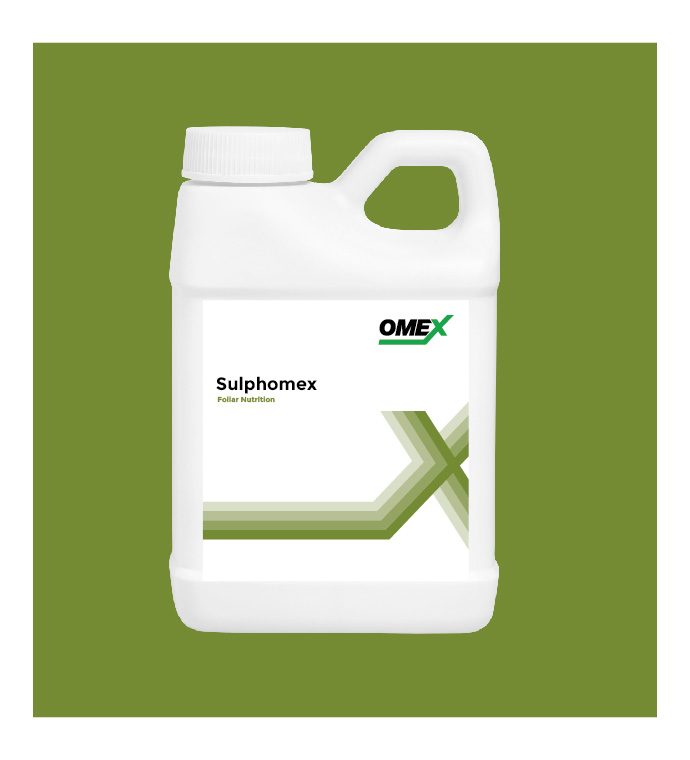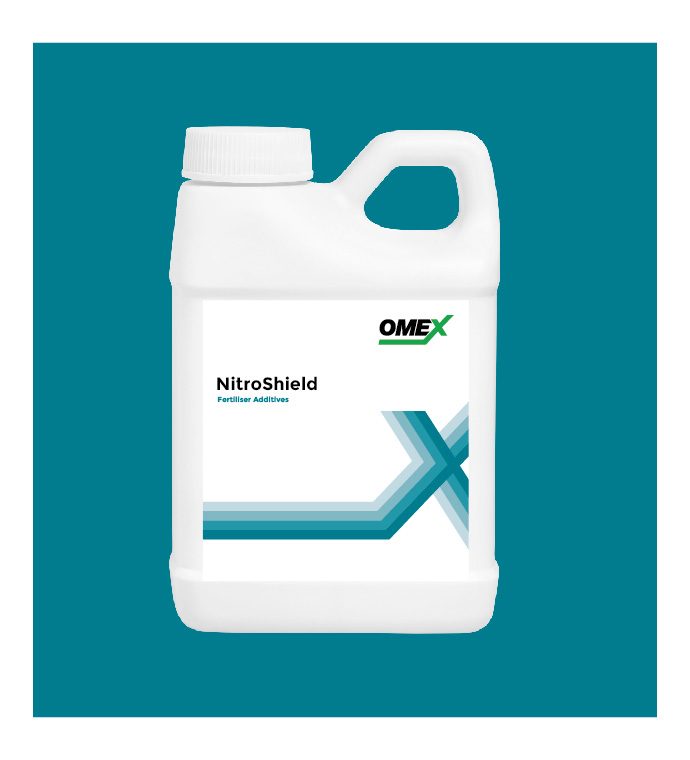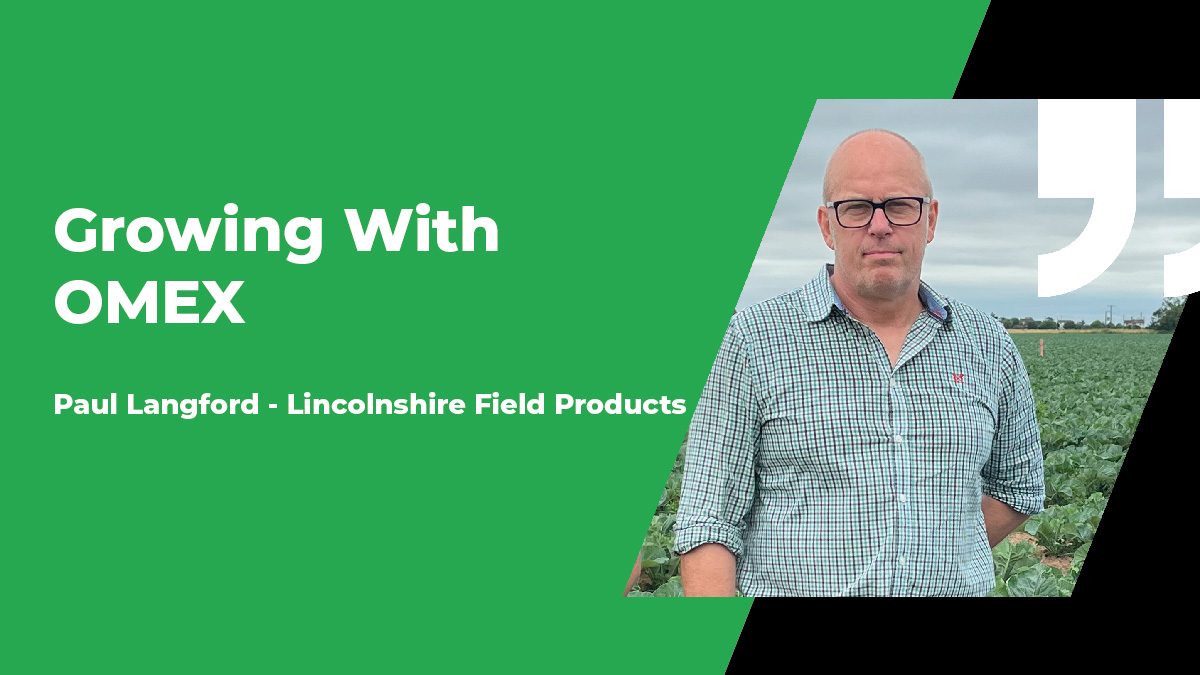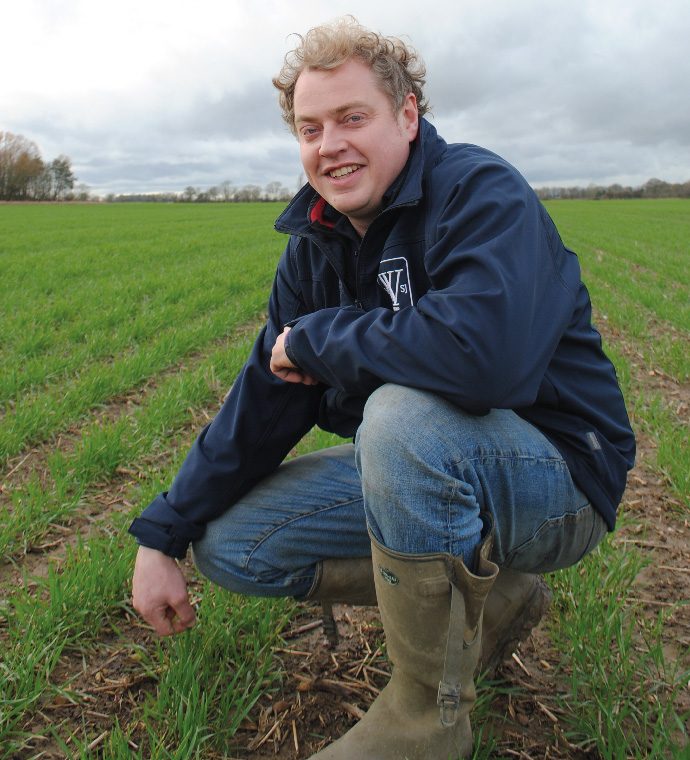YEN Award Winner Utilises Liquid Fertiliser and NitroShield To Boost Yield
CLIENT / Mark Stubbs PRODUCT / NitroShield®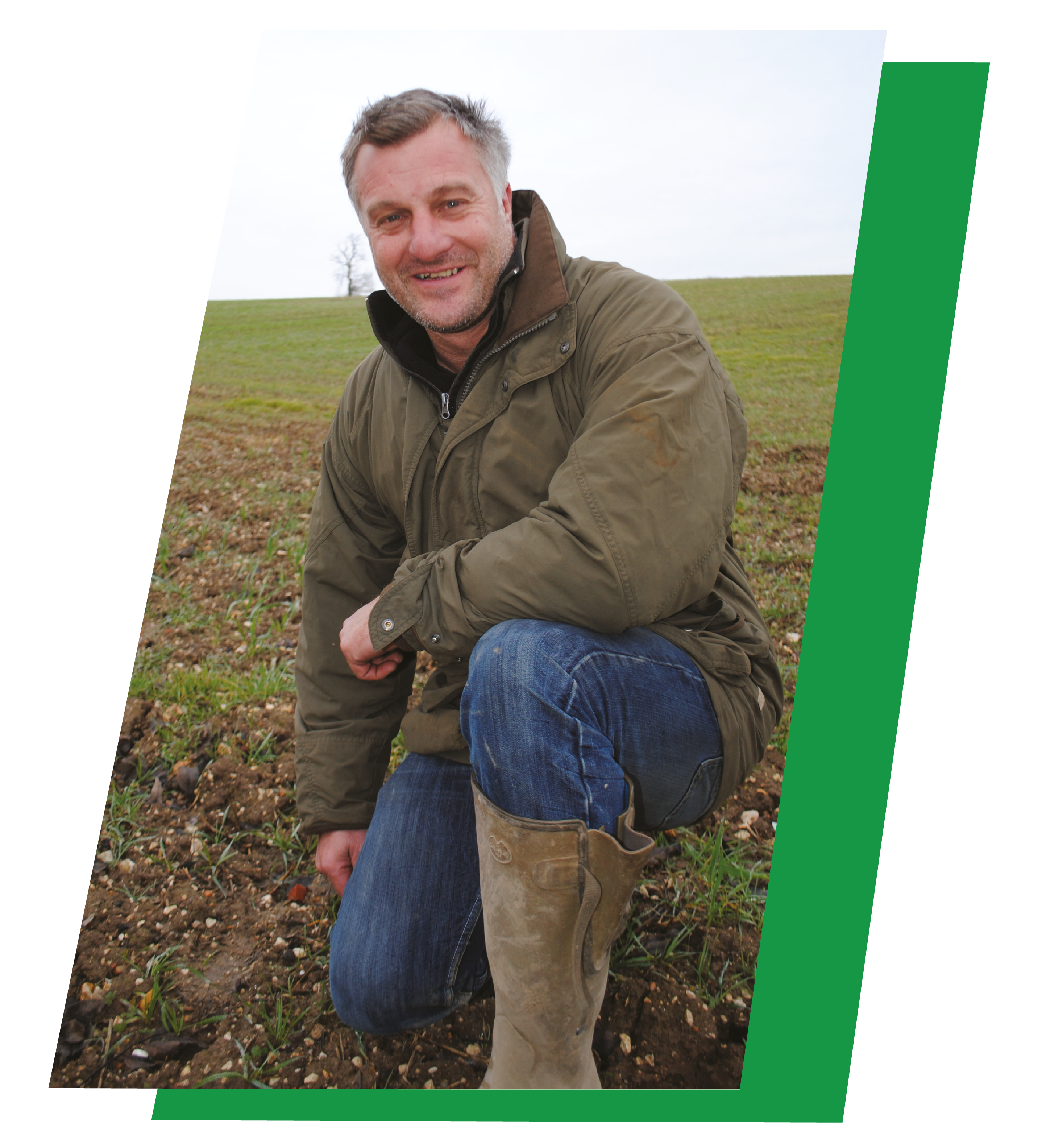
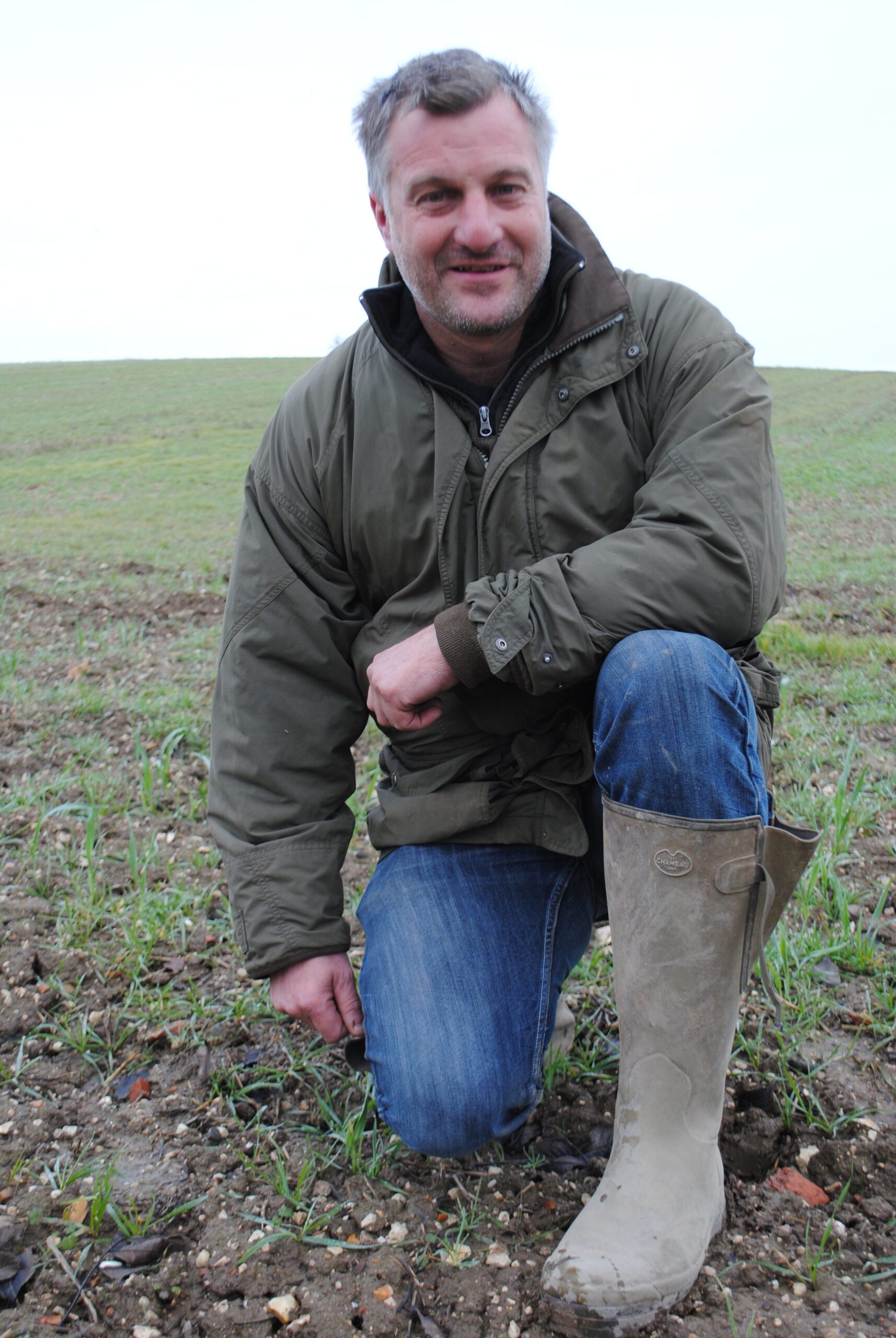
Out with the old, In with the new
Upgrading from a 24m granular spreader to a new 36m dual-purpose sprayer has greatly enhanced capacity, opening up new opportunities for business growth and the potential to expand contracting services.
Beaconsfield Farm, located near Marsh Chapel in North East Lincolnshire, spans 700 hectares of predominantly chalky clay soils. The farm follows a combinable crop rotation, consisting of 40% oilseed rape, 40% winter wheat, and 20% spring crops, including barley and oilseed rape.
Previously, under the granular fertiliser system, the average wheat yield was 12.7t/ha. However, after switching to OMEX liquid fertiliser, yields have risen to an impressive 16.3t/ha. Additionally, the farm’s top oilseed rape yield currently stands at 6.77t/ha.
Contact us!
Mr Mark Stubbs – Beaconsfield Farm, North East Lincolnshire
Mr. Stubbs, the 2019 UK YEN Gold Wheat winner and Bronze Oilseed Rape winner, has an ambitious goal of expanding the farm’s arable area to 2,500 hectares. He notes that the new sprayer offers an additional 4,000 hectares of capacity and is considering adding a second sprayer to ensure he can continue meeting the needs of his contracting customers without compromise.
“I’m a big believer in getting the application timing right because it can lead to reduced costs and higher yields,” he says.

Increased and consistent yields with OMEX liquid fertiliser
In farming terms, last year was an exceptional year. Mr Stubbs makes no pretence that the significant yield increase was solely down to switching to liquids. Nevertheless, applying nutrients on demand coupled with improved accuracy and product quality has had a major impact. Yields are now consistent across the whole field.
Liquid Fertiliser

The benefits of coastal farm land
“When other farms further in land were suffering drought-like conditions and crops were burning up, we enjoyed higher moisture levels. We also think that being close to the sea meant we didn’t get the low light intensity in the winter.”
Beaconsfield Farm grows Group 2 wheat varieties such as KWS Siskin and last year it achieved milling quality although it was being grown for feed.
“We prefer drilling late on this farm because of the blackgrass problem and so KWS Siskin suits our situation well,” he says. “Our aim is for high yielding feed but last year we surpassed expectation and hit milling too.”
“Applying granular fertiliser always used to be a three man operation and there was also the hassle of getting rid of used bags afterwards. We still have two men on the liquid operation because we choose to run a 10,000 litre bowser, but the system is far more efficient.”
Mark Stubbs


The fertiliser strategy
The fertiliser programme now begins in late February with the first of three liquid applications, split equally as OMEX 22N+10SO₃ (Nitroflo 22+S) at a rate of 250L/ha. This replaces the earlier application of granular fertiliser 21N:60SO₃, which was previously applied in February. The second and third liquid applications are made at the end of March and April, delivering 69kgN/ha and 31kgSO₃/ha at each stage. These timings align with pesticide applications around GS 30, 31, and 32.
The new sprayer is a 36m, 5000l Bateman RB55 with auto nozzle shut-off , employed to apply pesticides as well as liquid fertiliser, covering around 7,300ha/annum.
“Applying the granular sulphur fertiliser in one hit meant a risk of losing much of the sulphur to leaching,” explains Mr Stubbs. “But, when applying sulphur along with the nitrogen in smaller doses and more frequently both elements are taken up more efficiently by the plant. We are putting on half of the sulphur that we used to and getting higher yields.
“Our observations are that a regular application approach results in the crop taking up the nitrogen and sulphur immediately whereas granular fertiliser just stays on the ground and relies on moisture. We are conscious of scorch risk so we try to avoid extreme temperatures, preferring to go for the dull and overcast days if possible.”

Apply with accuracy and comply with regulations
Mr Stubbs has fitted an auto nozzle shut off function on the sprayer, which has significantly improved accuracy and rates. On the granular system he says poorer accuracy meant there was always in-field overlap as well as valuable nutrients being thrown into the field margins and hedgerows.
“In order not to contravene NVZ regulations we would always have to under-apply granular fertiliser because of the risk of application variability,” points out Mr Stubbs. “On liquids we can apply with complete accuracy and not pay for fertiliser we don’t need.”

Liquid Fertiliser – Quick, Easy and Efficient
Mr Stubbs used to have to buy his granular fertiliser in June and then store it for nearly nine months. He would collect it himself from Immingham and store it undercover, while leaving the application kit outside. Having switched to OMEX liquid fertiliser it is now the machines that are undercover and the fertiliser is stored in four 50t bunded tanks in the yard. Another 50t tank is positioned at a different location 10 miles away near to outlying land.
“Applying granular fertiliser always used to be a three man operation and there was also the hassle of getting rid of used bags afterwards. We still have two men on the liquid operation because we choose to run a 10,000 litre bowser, but the system is far more efficient.”

